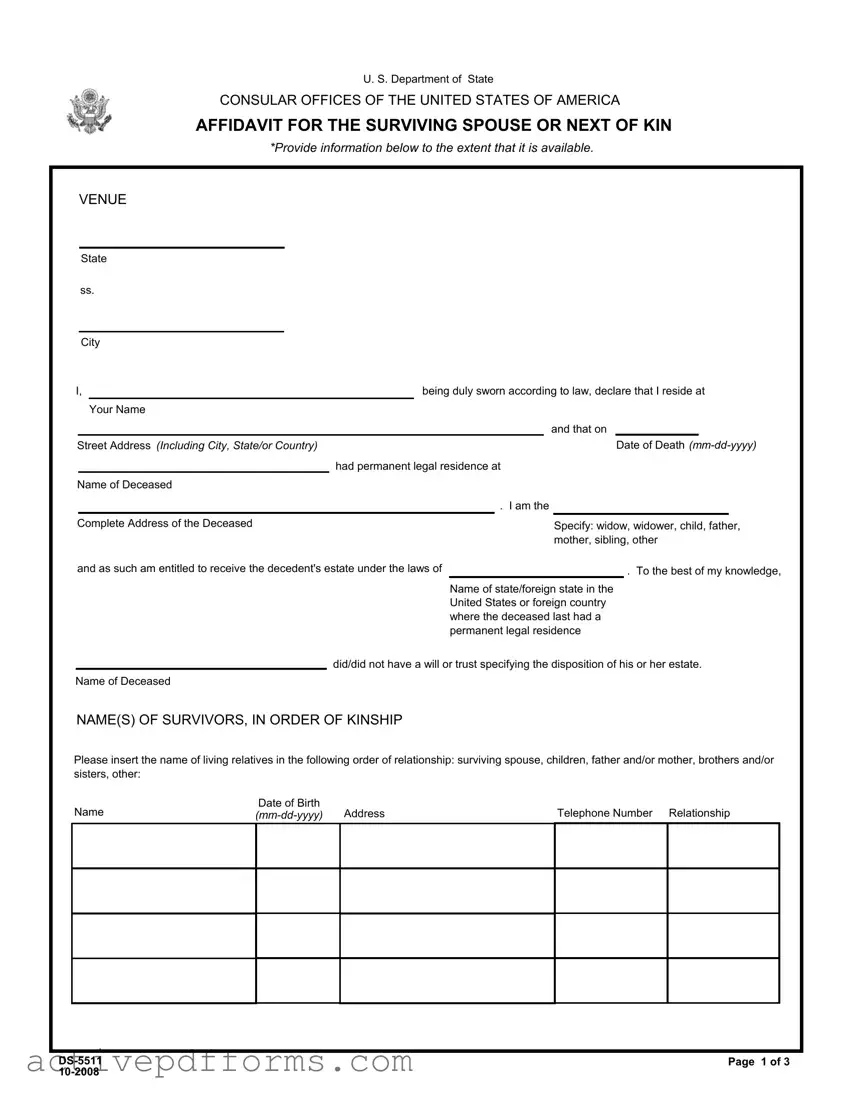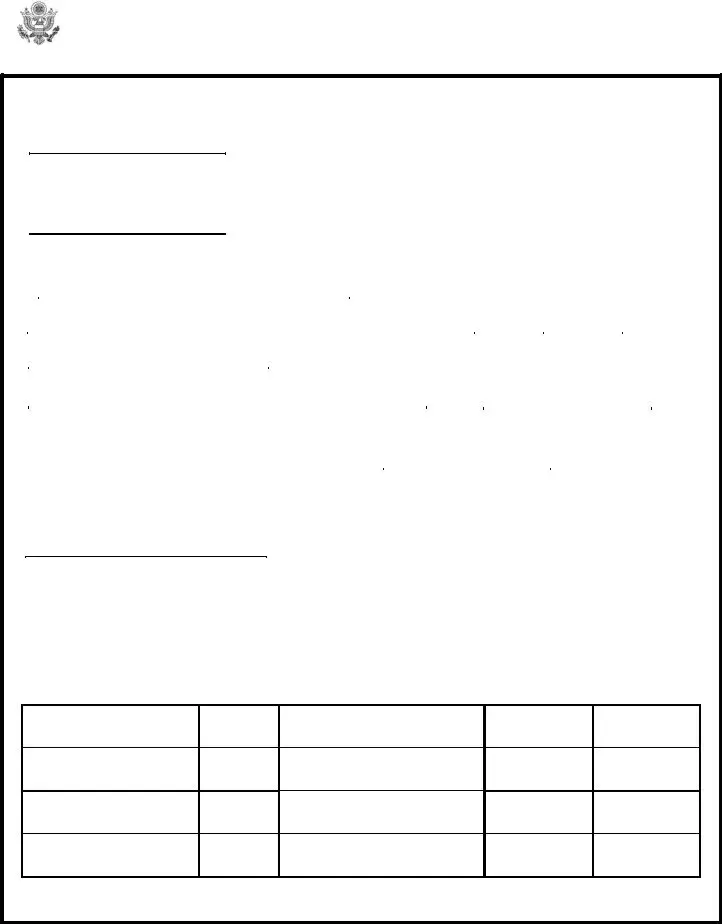When an American citizen passes away abroad, the process of settling their affairs can become complex and emotionally taxing for their loved ones. This is where the U.S. Department of State steps in to assist. The Next Of Kin form, formally known as the DS-5511, plays a vital role in this process. It enables the consular officers to act as "provisional conservators" of the deceased’s personal effects, particularly in situations where no legal representative or trustee is present to manage the decedent's estate. Filled out by the surviving spouse or closest relative, the form captures essential details such as the deceased’s name, last permanent legal residence, and the relationship of the affiant to the deceased, along with a declaration regarding the existence of a will or trust. The provision of this information is voluntary. However, failing to complete this form necessitates obtaining and presenting alternative documentation to claim the deceased’s estate. This form is not only about administrating the estate but also ensures that a decedent's personal effects are released to the right person, hence serving a crucial function in the aftermath of a loved one’s death abroad. The information collected may also be used for judicial matters, including the notification of kin or contested estate issues, highlighting the form’s significance in facilitating consular assistance during such difficult times.



